Related Research Articles

Land art, variously known as Earth art, environmental art, and Earthworks, is an art movement that emerged in the 1960s and 1970s, largely associated with Great Britain and the United States but that also includes examples from many countries. As a trend, "land art" expanded boundaries of art by the materials used and the siting of the works. The materials used were often the materials of the Earth, including the soil, rocks, vegetation, and water found on-site, and the sites of the works were often distant from population centers. Though sometimes fairly inaccessible, photo documentation was commonly brought back to the urban art gallery.
The Federal Art Project (1935–1943) was a New Deal program to fund the visual arts in the United States. Under national director Holger Cahill, it was one of five Federal Project Number One projects sponsored by the Works Progress Administration (WPA), and the largest of the New Deal art projects. It was created not as a cultural activity, but as a relief measure to employ artists and artisans to create murals, easel paintings, sculpture, graphic art, posters, photography, theatre scenic design, and arts and crafts. The WPA Federal Art Project established more than 100 community art centers throughout the country, researched and documented American design, commissioned a significant body of public art without restriction to content or subject matter, and sustained some 10,000 artists and craft workers during the Great Depression. According to American Heritage, “Something like 400,000 easel paintings, murals, prints, posters, and renderings were produced by WPA artists during the eight years of the project’s existence, virtually free of government pressure to control subject matter, interpretation, or style.”
Diller Scofidio + Renfro is an American interdisciplinary design studio that integrates architecture, the visual arts, and the performing arts. Based in New York City, Diller Scofidio + Renfro is led by four partners – Elizabeth Diller, Ricardo Scofidio, Charles Renfro, and Benjamin Gilmartin – who work with a staff of architects, artists, designers, and researchers.
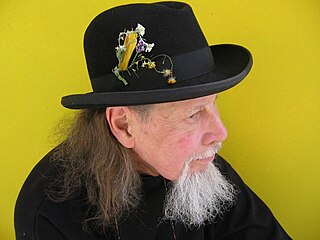
Willoughby Sharp was an American artist, independent curator, independent publisher, gallerist, teacher, author, and telecom activist. Avalanche published interviews they conducted with contemporary artists such as Vito Acconci, Dennis Oppenheim and Yvonne Rainer. Sharp also was contributing editor to four other publications: Impulse (1979–1981); Video magazine (1980–1982); Art Com (1984–1985), and the East Village Eye (1984–1986). He published three monographs on contemporary artists, contributed to many exhibition catalogues, and wrote on art for Artforum, Art in America, Arts magazine, Laica Journal, Quadrum and Rhobo. He was editor of the Public Arts International/Free Speech documentary booklet in 1979. Sharp received numerous grants, awards, and fellowships; both as an individual or under the sponsorship of non-profit arts organizations.

Doug Aitken is an American multidisciplinary artist. Aitken's body of work ranges from photography, print media, sculpture, and architectural interventions, to narrative films, sound, single and multi-channel video works, installations, and live performance. He currently lives in Venice, California, and New York City.

Manuel John Neri Jr. was an American sculptor who is recognized for his life-size figurative sculptures in plaster, bronze, and marble. In Neri's work with the figure, he conveys an emotional inner state that is revealed through body language and gesture. Since 1965 his studio was in Benicia, California; in 1981 he purchased a studio in Carrara, Italy, for working in marble. Over four decades, beginning in the early 1970s, Neri worked primarily with the same model, Mary Julia Klimenko, creating drawings and sculptures that merge contemporary concerns with Modernist sculptural forms.
Ming Fay is a Shanghai-born and New York City-based sculptor and professor. His work focuses on the concept of the garden as a symbol of utopia and the relationship between man and nature. Drawing upon an extensive knowledge of plants both Eastern and Western, real and mythical, Fay creates his own calligraphic floating forest of reeds, branches and surreal species. He is most well known for his sculpture and large scale installations and he currently teaches sculpture at William Paterson University in Wayne, New Jersey.
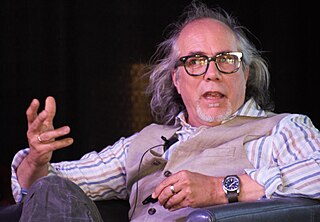
Iñigo Manglano-Ovalle is an American conceptual artist known for multidisciplinary, socially oriented sculpture, video and installations and urban community-based projects of the 1990s. His work often explores a dialectical relationships involving minimalist aesthetics, the utopian ambitions of modernism and science, and the resulting—often negative—social, geopolitical and ecological consequences of such ideologies. New York Times critic Holland Cotter wrote that Manglano-Ovalle was adept in "distilling complex ideas into inviting visual metaphors," while Jody Zellen described his work as "infused with a formal elegance and sociopolitical content." Manglano-Ovalle has been featured in solo exhibitions at the Art Institute of Chicago, MASS MoCA, Museo Tamayo Arte Contemporaneo and Museum of Contemporary Art, Chicago (MCA), and participated in Documenta 12, the Venice Biennale, Whitney Biennial, and Bienal de São Paulo. He has been recognized with MacArthur Foundation, Guggenheim, and National Endowment for the Arts fellowships and his work belongs to the collections of forty major institutions. He has been a professor at Northwestern University since 2012 and lives and works in Chicago.
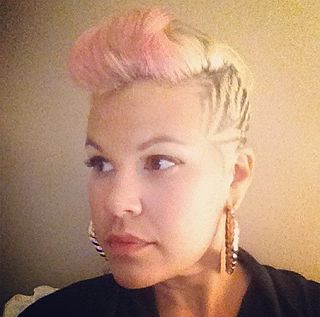
Heather T. Hart is an American visual artist who works in a variety of media including interactive and participatory Installation art, drawing, collage, and painting. She is a co-founder of the Black Lunch Table Project, which includes a Wikipedia initiative focused on addressing diversity representation in the arts on Wikipedia.

Elizabeth Turk is an artist and native Californian known for her marble sculptures and community installations. She splits time between a studio in Santa Ana, CA and NYC, where she has been represented by Hirschl & Adler Modern since her first exhibition in 2000. She is a MacArthur “Genius” Fellow, a Smithsonian Artist Research Fellow, an Annalee & Barnett Newman Foundation and Joan Mitchell Foundation grant recipient, among other awards.
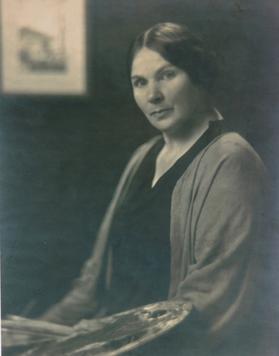
Jennie Amelia Vennerström Cannon, also known as Jennie Vennerstrom Cannon (1869–1952), was an American artist who spent most of her career in California but gained national recognition. She received the first master's degree from the Art Department at Stanford University, studied in New York with William Merritt Chase, whom she befriended and later persuaded to teach at Carmel-by-the-Sea, California, and received both the Elliott Bronze Medal and the Langdon Prize at the National Academy of Design. From her studio-homes in Berkeley and Carmel, California, her art was sent on traveling exhibitions across the United States. She was instrumental in founding the Carmel Art Association and the California League of Fine Arts in Berkeley. She championed women's equality in art communities across northern California. Her published art reviews appeared for decades in regional newspapers.
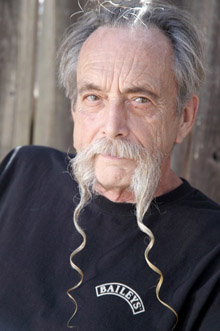
Clayton George Bailey, was an American artist who worked primarily in the mediums of ceramic and metal sculpture.
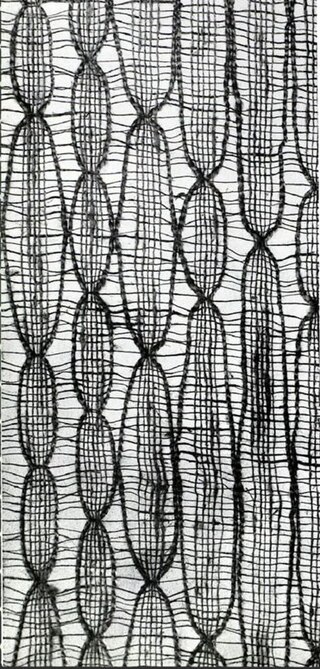
Kay Sekimachi is an American fiber artist and weaver, best known for her three-dimensional woven monofilament hangings as well as her intricate baskets and bowls.
Zarouhie Abdalian is an American artist of Armenian descent, known for site-specific sculptures and installations.

Elizabeth King is an American sculptor and writer known for movable figurative sculptures that she has employed in stop-frame animations. Her work combines exacting handcraft, elementary mechanics, and digital and electronic technologies, applied in sculptures of half or full figures, heads, arms and hands, or even simply eyes. She often equips figures with subtly illuminated eyes and visible and invisible mechanisms enabling the performance of anatomically correct simple operations, seemingly of their own volition. Writers have described her figures as "insistently nonhuman" yet "uncannily alive" in their ability to project self-awareness, intelligence, agency and emotion. They reflect her interests in early clockwork automata, the history of the mannequin and puppet, literature involving unnatural figures come to life, and human movement. Art in America critic Leah Ollman wrote that King's "highly articulated automatons invite us to consider how consciousness arises from physical being … she portrays her mechanical surrogates as convincingly self-aware, while we are left to ponder that age-old question: where exactly does the self reside?"
Stephen Laub is an American artist who works in performance, video, and sculpture.
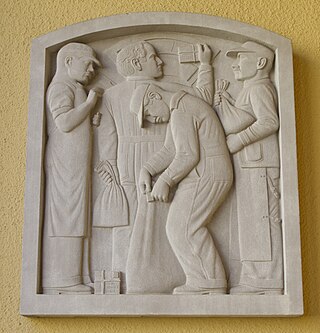
The Treasury Relief Art Project (TRAP) was a New Deal arts program that commissioned visual artists to provide artistic decoration for existing Federal buildings during the Great Depression in the United States. A project of the United States Department of the Treasury, TRAP was administered by the Section of Painting and Sculpture and funded by the Works Progress Administration, which provided assistants employed through the Federal Art Project. The Treasury Relief Art Project also created murals and sculpture for Public Works Administration housing projects. TRAP was established July 21, 1935, and continued through June 30, 1938.
Duane Linklater is an artist of Omaskêko Cree ancestry.
Hugo Bastidas is an American painter known for black and white paintings that imitate the effect of grisaille and often resemble black and white photographs. Bastidas’ paintings frequently reference architecture, water, vegetation and art history, and reflect his concern about the human condition, globalization, and their effect on the Earth's well-being.
Lina Puerta is a Colombian-American mixed media artist based in New York City. She was born in New Jersey and grew up in Colombia.
References
- 1 2 3 4 5 "Elizabeth Demaray: Biography". Rutgers University: Dept. of Fine Arts. Rutgers University. Retrieved October 12, 2016.
- ↑ Newman, Andrew Adam. "Make Frills, Not War: A Cozy for a Missile". New York Times. Retrieved October 12, 2016.
- 1 2 "Depicting Cold War Weapons". Texas A&M University-Corpus Christi. Retrieved October 12, 2016.
- ↑ Fehrenbacher, Jill. "Prefabs for Hermit Crabs". Inhabitat.com. Retrieved October 12, 2016.
- ↑ Dunn, Collin. "The Hand Up Project: A Helping Hand to Those in Need". treehugger.com. Retrieved October 12, 2016.
- ↑ ""Art "For The Birds" Created by Rutgers-Camden Prof". Rutgers Today, Rutgers University. Retrieved October 12, 2016.
- ↑ Prakash, Sheila. "Desert Dwellers on a Fast-Food Diet". New York Times. Retrieved October 12, 2016.
- ↑ Eveleth, Rose. "Artist Paints Lichens on NYC Buildings". Scientific American. Retrieved October 12, 2016.
- ↑ Klein, Richard. "Soft Rocks A Workshop with Artist Elizabeth Demaray". Franklin Street Works. Archived from the original on October 13, 2016. Retrieved October 12, 2016.
- ↑ "Branching Out: Rutgers IndaPlant Project Allows Plants to Move Freely on Robotic Carriages". Rutgers Today, Rutgers University. Retrieved October 12, 2016.
- ↑ Plafke, James. "Exoskeleton turns plants into faunaborgs so they can autonomously seek sunlight and water". ExtremeTech. Retrieved October 12, 2016.
- ↑ Mims, Christopher. "Robotic exoskeleton turns everyday houseplants into sun-seeking cyborgs". Quartz.com. Retrieved October 12, 2016.
- ↑ "People". Digital Humanities Research Laboratory at Rutgers. Retrieved October 12, 2016.
- ↑ "Elizabeth Demaray". Leonardo/The International Society for the Arts, Sciences and Technology (Leonardo/ISAST). Retrieved October 12, 2016.
- ↑ "National and International Studio Program Participants". New York Museum of Modern Art. Archived from the original on October 13, 2016. Retrieved October 12, 2016.
- ↑ "Directory of Artists' Fellows: 1985–2013" (PDF). New York Foundation for the Arts. Retrieved October 12, 2016.
- ↑ "Elizabeth Demaray Wins 2003 AEM Award". Artdaily.com. Retrieved October 12, 2016.
- ↑ "National and International Studio Program". New York Museum of Modern Art, 2001–2002. Archived from the original on October 13, 2016. Retrieved October 12, 2016.
- ↑ "Dada Post Residency: Elizabeth Demaray – New York". DADAPost. Archived from the original on October 18, 2016. Retrieved October 12, 2016.
- ↑ "Cities Made by People". Cintinerary. Retrieved October 12, 2016.[ permanent dead link ]
- ↑ "OMCA Collections: Elizabeth Demaray". Oakland Museum of California. Retrieved October 12, 2016.
- ↑ Karush Rogers, Teri. "Gotta Move, Gotta Sell". New York Times. Retrieved October 12, 2016.